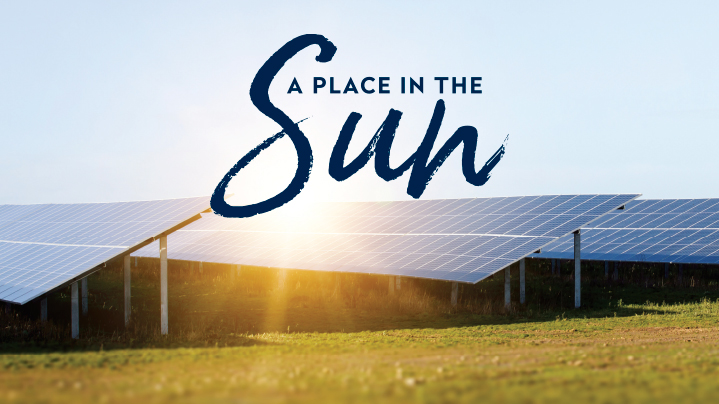A place in the sun
Credited with an uptick in rural sales activity, pandemic spending behaviour saw a push to lifestyle properties in 2021, but the rising costs of goods and services in 2022 mean landowners may be looking for ways to improve their efficiency.
A constant pain point for consumers, stubbornly high electricity prices are supporting rural landowners to investigate their renewable energy options, aided by somewhat lower cost advances in solar power and battery options.
This notion is supported by the Energy Efficiency and Conservation Authority (EECA) which estimates about 20 percent of New Zealand’s electricity demand (close to $2.4 billion a year) could be saved through a combination of more efficient use, and by utilising greater renewable energy options.
This includes solar, which continues to offer more New Zealand property owners renewable energy options.
Higher sunshine areas like Northland, Bay of Plenty and the North Island’s East Coast provide an opportunity to incorporate solar energy into power supply options.
This can be as straightforward as incorporating green design principles, like passive solar design, into the construction of a new home or building, and could extend to include capabilities for the absorption of the sun’s warmth during the day, while releasing it at night.
Expected to harvest some 500 watts of heat for every square metre of a north-facing window during a clear day, a well-designed building could see energy savings comparable to plugging in a small standard heater into every square metre of floor space.
For landowners in more remote areas, or those seeking a more diverse electricity supply, the enquiry for solar electricity systems called photovoltaic systems is increasing.
Known as PV systems, these alternative energy options include mini-hydro and solar-powered offerings, with interest buoyed by the relatively affordable cost of installation/connection to power lines from a rural site.
Anecdotes for traditional renewable energy of old have told of huge installation costs circa $200,000 – prompting environmentally-conscious landowners to seek more affordable renewable energy options, with these PV systems offering just that.
Looking to the future, renewable energy providers expect growing potential in rural communities for joint solar power farms or blocks that enable those communities to have a stake in their electricity supply, its cost and construction.
A growing push toward more collaborative community endeavours in rural and regional areas is behind an idea that could see individual property owners take on part of a solar farm with equity involved. Commentators even say this could involve a type of community trust ownership model.
This is further enhanced by the opportunity that power could be supplied to members of the generation group with the surplus being sold back to the main grid.
However, earlier pricing structures for selling back to the grid are reported as being much more appealing as this has since been reduced to about eight cents per kilowatt per hour with a 10 cents per kilowatt per hour cap on what can be sold.
This means consumers will typically pay three times more to buy electricity than what they can get selling it back to the grid.
Often a more cost-effective solution, solar users are utilising as much solar energy during the day, working to shift more power use from the usual morning and evening peaks. On a lifestyle block, this can involve using a solar variable speed drive.
Property owners might investigate the installation of a 100-kilowatt solar power delivery for a 50-kilowatt pump, and as the sun comes up in the morning, the pump gradually winds up with it.
The pump would reach peak demand as the sun’s energy supply also climaxes. Energy accrued could fill an irrigation pond, or even irrigate during the day.
Utilising solar energy power-specific parts is more common in rural areas now too.
Solar electric fence technology has boosted the use of smart systems on lifestyle properties with animals. This ensures reliable supply, as well as options for rotational grazing and/or feed breaks.
Once consigned to complicated or expensive future tech, huge advances in solar technology over the last few years have meant developments are now used with confidence by property owners across New Zealand, with users converted by convenience and flexibility.
Solar panels are half the size of those used five years ago, meaning energisers are now not much larger than those used in conventional battery units.
Solar units are also backed up by smart battery technology that keeps unit batteries constantly charged, offering confidence to users during low light periods of winter. This functionality enables units to operate as efficiently during the cooler months as they do in the height of summer.
Read more...
[Download PDF]Subscribe to receive the latest residential news and insights from Bayleys’ View magazine.
